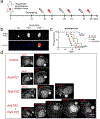Phototherapy with Cancer-Specific Nanoporphyrin Potentiates Immunotherapy in Bladder Cancer
- PMID: 35921526
- PMCID: PMC9633390
- DOI: 10.1158/1078-0432.CCR-22-1362
Phototherapy with Cancer-Specific Nanoporphyrin Potentiates Immunotherapy in Bladder Cancer
Abstract
Purpose: Immune checkpoint inhibitors (ICI) in general have shown poor efficacy in bladder cancer. The purpose of this project was to determine whether photodynamic therapy (PDT) with bladder cancer-specific porphyrin-based PLZ4-nanoparticles (PNP) potentiated ICI.
Experimental design: SV40 T/Ras double-transgenic mice bearing spontaneous bladder cancer and C57BL/6 mice carrying syngeneic bladder cancer models were used to determine the efficacy and conduct molecular correlative studies.
Results: PDT with PNP generated reactive oxygen species, and induced protein carbonylation and dendritic cell maturation. In SV40 T/Ras double-transgenic mice carrying spontaneous bladder cancer, the median survival was 33.7 days in the control, compared with 44.8 (P = 0.0123), 52.6 (P = 0.0054), and over 75 (P = 0.0001) days in the anti-programmed cell death-1 antibody (anti-PD-1), PNP PDT, and combination groups, respectively. At Day 75 when all mice in other groups died, only 1 in 7 mice in the combination group died. For the direct anti-tumor activity, compared with the control, the anti-PD-1, PNP PDT, and combination groups induced a 40.25% (P = 0.0003), 80.72% (P < 0.0001), and 93.03% (P < 0.0001) tumor reduction, respectively. For the abscopal anticancer immunity, the anti-PD-1, PNP PDT, and combination groups induced tumor reduction of 45.73% (P = 0.0001), 54.92% (P < 0.0001), and 75.96% (P < 0.0001), respectively. The combination treatment also diminished spontaneous and induced lung metastasis. Potential of immunotherapy by PNP PDT is multifactorial.
Conclusions: In addition to its potential for photodynamic diagnosis and therapy, PNP PDT can synergize immunotherapy in treating locally advanced and metastatic bladder cancer. Clinical trials are warranted to determine the efficacy and toxicity of this combination.
©2022 American Association for Cancer Research.
Conflict of interest statement
Conflicts of interest
Drs. Pan, Lam and Zhang are co-inventors of the PLZ4 peptide used for this study; Drs. Lam, Li, Pan and Lin are co-inventors of nanoporphyrin; Drs. Pan, Lam, Li and Lin are co-founders of LP Therapeutics that licensed PLZ4 therapeutics. Dr. Lam is the founder of LamnoTherapeutics that licenses nanoporphyrin. The remaining authors declare no potential conflicts of interest.
Figures





References
-
- Siegel RL, et al., Cancer statistics, 2022. CA Cancer J Clin, 2022. 72(1): p. 7–33. - PubMed
-
- Balar AV, et al., Pembrolizumab monotherapy for the treatment of high-risk non-muscle-invasive bladder cancer unresponsive to BCG (KEYNOTE-057): an open-label, single-arm, multicentre, phase 2 study. Lancet Oncol, 2021. 22(7): p. 919–930. - PubMed
-
- Powles T, et al., Avelumab Maintenance Therapy for Advanced or Metastatic Urothelial Carcinoma. N Engl J Med, 2020. 383(13): p. 1218–1230. - PubMed
-
- Powles T, et al., MPDL3280A (anti-PD-L1) treatment leads to clinical activity in metastatic bladder cancer. Nature, 2014. 515(7528): p. 558–62. - PubMed
Publication types
MeSH terms
Substances
Grants and funding
LinkOut - more resources
Full Text Sources
Medical
Miscellaneous

